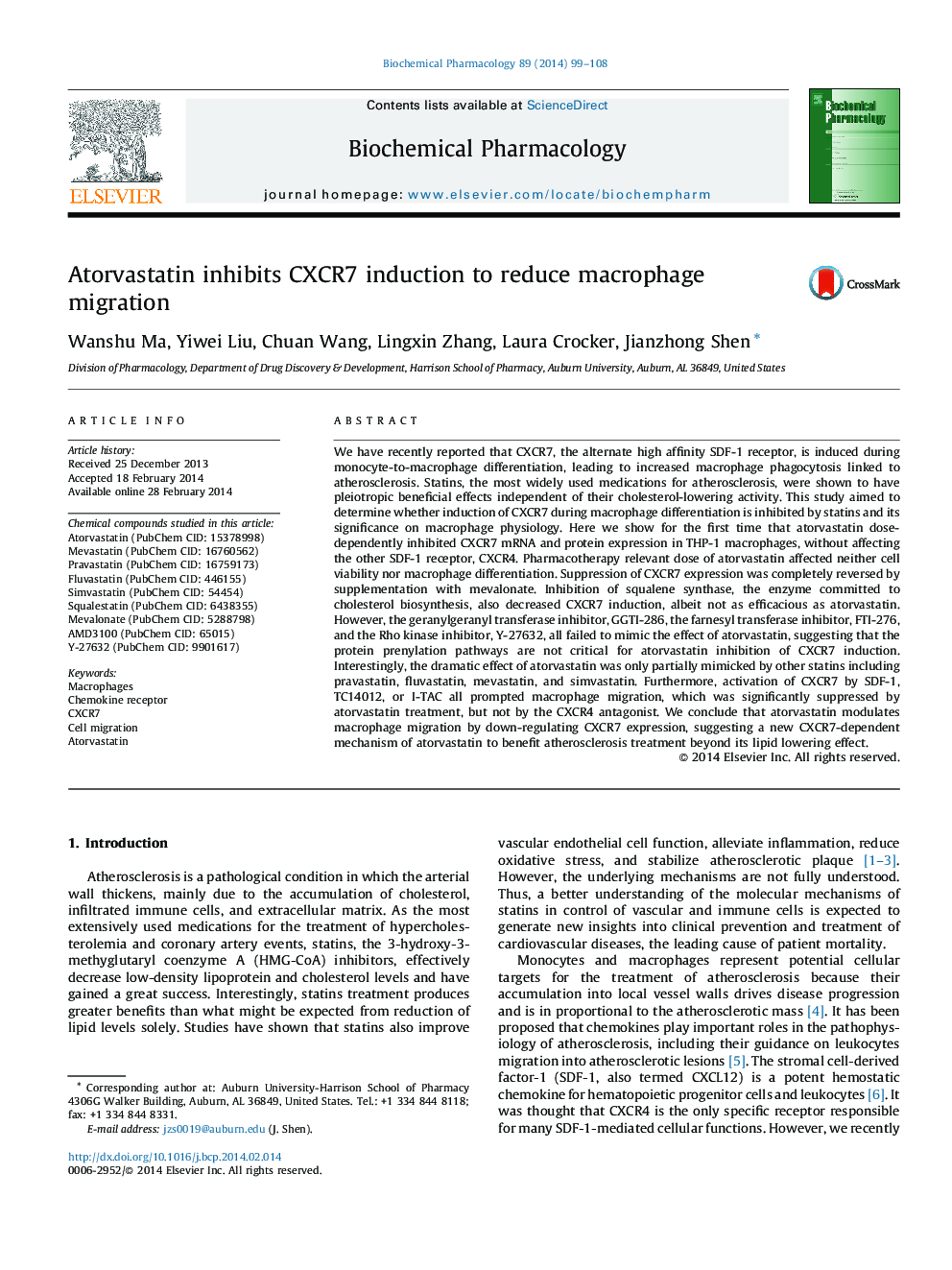| Article ID | Journal | Published Year | Pages | File Type |
|---|---|---|---|---|
| 2512319 | Biochemical Pharmacology | 2014 | 10 Pages |
We have recently reported that CXCR7, the alternate high affinity SDF-1 receptor, is induced during monocyte-to-macrophage differentiation, leading to increased macrophage phagocytosis linked to atherosclerosis. Statins, the most widely used medications for atherosclerosis, were shown to have pleiotropic beneficial effects independent of their cholesterol-lowering activity. This study aimed to determine whether induction of CXCR7 during macrophage differentiation is inhibited by statins and its significance on macrophage physiology. Here we show for the first time that atorvastatin dose-dependently inhibited CXCR7 mRNA and protein expression in THP-1 macrophages, without affecting the other SDF-1 receptor, CXCR4. Pharmacotherapy relevant dose of atorvastatin affected neither cell viability nor macrophage differentiation. Suppression of CXCR7 expression was completely reversed by supplementation with mevalonate. Inhibition of squalene synthase, the enzyme committed to cholesterol biosynthesis, also decreased CXCR7 induction, albeit not as efficacious as atorvastatin. However, the geranylgeranyl transferase inhibitor, GGTI-286, the farnesyl transferase inhibitor, FTI-276, and the Rho kinase inhibitor, Y-27632, all failed to mimic the effect of atorvastatin, suggesting that the protein prenylation pathways are not critical for atorvastatin inhibition of CXCR7 induction. Interestingly, the dramatic effect of atorvastatin was only partially mimicked by other statins including pravastatin, fluvastatin, mevastatin, and simvastatin. Furthermore, activation of CXCR7 by SDF-1, TC14012, or I-TAC all prompted macrophage migration, which was significantly suppressed by atorvastatin treatment, but not by the CXCR4 antagonist. We conclude that atorvastatin modulates macrophage migration by down-regulating CXCR7 expression, suggesting a new CXCR7-dependent mechanism of atorvastatin to benefit atherosclerosis treatment beyond its lipid lowering effect.
Graphical abstractFigure optionsDownload full-size imageDownload as PowerPoint slide
